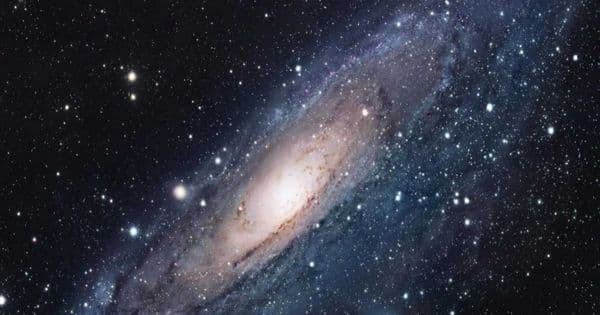Scientists confirmed the presence of the Cosmic Origin of Complex Organic Molecules with Radiofrequency Footprint. Scientists in Japan have confirmed the presence of acetonitrile in a distant interstellar gas cloud using a radio telescope. The origin of life on Earth is a topic that has piqued human curiosity since probably before recorded history began. But how did the organic matter that constitutes life forms even arrive at our planet?
Many scientists have reported finding all sorts of COMs in molecular clouds–gigantic regions of interstellar space that contain various types of gases. This is generally done using radio telescopes, which measure and record radiofrequency waves to provide a frequency profile of the incoming radiation called a spectrum. Molecules in space are usually rotating in various directions, and they emit or absorb radio waves at very specific frequencies when their rotational speed changes.
Scientists in Japan have confirmed the presence of acetonitrile in a distant interstellar gas cloud using a radio telescope. Ultimately, this study may not only give us some clues about where the molecules that conform us came from but also serve as data for the time when humans manage to venture outside the solar system.
Current physics and chemistry models allow us to approximate the composition of what a radio telescope is pointed at, via analysis of the intensity of the incoming radiation at these frequencies. In a recent study published in Monthly Notices of the Royal Astronomical Society, Dr Mitsunori Araki from Tokyo University of Science, along with other scientists from across Japan, tackled a difficult question in the search for interstellar COMs: how can we assert the presence of COMs in the less dense regions of molecular clouds?
Because molecules in space are mostly energized by collisions with hydrogen molecules, COMs in the low-density regions of molecular clouds emit less radio waves, making it difficult for us to detect them. However, Dr Araki and his team took a different approach based on a special organic molecule called acetonitrile (CH3CN).
Acetonitrile is an elongated molecule that has two independent ways of rotating: around its long axis, like a spinning top, or as if it were a pencil spinning around your thumb. The latter type of rotation tends to spontaneously slow down due to the emission of radio waves and, in the low-density regions of molecular clouds, it naturally becomes less energetic or “cold.”
In contrast, the other type of rotation does not emit radiation and therefore remains active without slowing down. This particular behavior of the acetonitrile molecule was the basis on which Dr Araki and his team managed to detect it. He explains: “In low-density regions of molecular clouds, the proportion of acetonitrile molecules rotating like a spinning top should be higher. Thus, it can be inferred that an extreme state in which a lot of them would be rotating in this way should exist. Our research team was, however, the first to predict its existence, select astronomical bodies that could be observed, and actually begin exploration.”
Instead of going for radio wave emissions, they focused on radio wave absorption. The “cold” state of the low-density region, if populated by acetonitrile molecules, should have a predictable effect on the radiation that originates in celestial bodies like stars and goes through it. In other words, the spectrum of a radiating body that we perceive on Earth as being “behind” a low-density region would be filtered by acetonitrile molecules spinning like a top in a calculable way, before it reaches our telescope on earth. Therefore, Dr. Araki and his team had to carefully select radiating bodies that could be used as an appropriate “background light” to see if the shadow of “cold” acetonitrile appeared in the measured spectrum. To this end, they used the 45 m radio telescope of the Nobeyama Radio Observatory, Japan, to explore this effect in a low-density region around the “Sagittarius molecular cloud Sgr B2(M),” one of the largest molecular clouds in the vicinity of the center of our galaxy.
Ultimately, this study may not only give us some clues about where the molecules that conform us came from but also serve as data for the time when humans manage to venture outside the solar system.
















